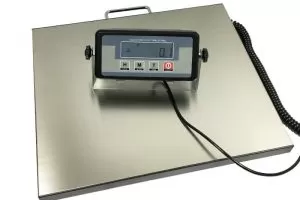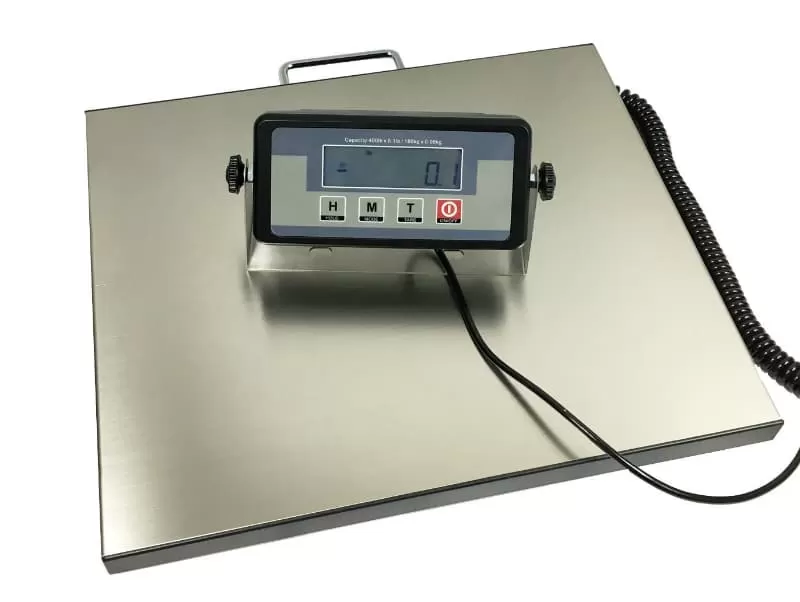Uses of Electronic Platform Scales
– For the verification of the weight in the postal shipments
– For inventory control
– Loading of trucks / wagons
– Custody transfer
– Quality control for batches of materials
– Production monitoring
An electronic platform scale is a weighing solution that combines two components: a scale and a terminal. The scales weigh the material placed on them automatically and the terminals collect the data from the output weight. Floor scales are generally not suitable for continuous weighing applications as in the case of electronic platform scales the product to be weighed is intended to be at rest during the measurement.
How to Select Digital Platform or Floor Scales ?
Choose the platform scale that best suits your application, according to the following criteria:
– Maximum weight
– Platform size required.
– Stationary or mobile use
– Washing conditions
– The loading characteristics of the material (e.g. steel coils require cradles)
Use the criteria of your application to find a suitable platform scale. Then confirm your choice by marking the location of the scale and taking into account the following considerations:
Appropriate Location of Electronic Platform Scales
Select a location that is flat within ¼ “(6 mm), solid, level and fully compatible with the weight of the platform scale plus the load to be applied. Avoid areas where the scale may be struck or objects may fall onto the scale. Avoid areas where water or chemical spills may damage the scale.
Avoid Vibrations Near Electronic Platform Scales
A platform scale is a very sensitive device and must be isolated from equipment that can produce
harmful or disturbing vibration. Equipment such as crushers, vibrating feed equipment, containers subject to hammering and hammer mills should not be placed near this type of scale
Where to Mount the Electronic Floor Scales?
The floor scales can be mounted flush with the floor. A floor scale that is mounted flush with the the floor must be mounted on a rigid steel base. In washdown applications, this shaft-type base should have a drainage to ensure that material is not trapped under the scale. Scales mounted on the top of the floor need protection from traffic and bumper protectors are recommended.
For scales mounted at the top of the floor where forklift weighing is required, a ramp will need to be installed to access the scale. The mounting feet on a floor scale are often adjustable to facilitate leveling. These feet must be adjusted so that the scale will not move when items are placed on it.
We recommend that you install the scale in an easily accessible area, with a clear indication that it is a platform scale. Make sure you can easily access the terminal box for troubleshooting and maintenance. If the platform scale is floor mounted, make sure the floor is flat. If the area where the scale is to be installed is not flat, you could use self-aligning flat feet. The tread plate should be used on scales that are flush with the floor for a secure base.
Assembly of Electronic Platform Scales at the Bank
The bench scales can be mounted flush with the bench or above it. A flush mounted bench scale must rest on a rigid steel base. The mounting feet on a bench scale are often adjustable to level the scale easily. The scale should not face any obstructions because this would affect its performance.
Install the scale in an easily accessible area. For protection, it clearly indicates that it is a platform scale. Make sure that you can access the load cell under the platform easily, so that you can troubleshoot and maintain it.
Installation of Electronic Outdoor Platform Scales
Truck scales or any type of platform scale installed outdoors must be able to withstand the conditions of the environment to which they are exposed. Truck scales or rail scales must be installed on high strength concrete pads to ensure that they can withstand heavy loads. In some cases, manhole covers are required on the scale platform for maintenance and repair.
Truck scales should be located so that the vehicle can get on and off the scale as easily as possible. The scale should not receive water above or below the platform; water buildup can affect weighing accuracy.
Outdoor scales may be subject to harsh environmental conditions. Proper installation and maintenance is of utmost importance. Because truck and railroad scales are often used for commercial applications, optimal accuracy is important. Manufacturer’s recommendations should be followed.
Other Considerations When Using Electronic Platform Scales
- Final load: Floor scales must be rated for 100% final load. The end load is an indication of how much weight you can apply to the scale.
- Mobility: Platform scales must have some mobility. Electronic moving platform scales must be set to zero before weighing the goods to ensure that any influence from the floor does not affect the weighing accuracy.
- Cleanliness: The design of the top of the platform should be the most appropriate to allow easy access to the maintenance area. Drainage holes and anti-slip finishes must be present and are very necessary for proper cleaning of the unit.
- Make sure that the construction of the scale and the load cell are made of stainless steel. The load cells must have a minimum IP67 rating.
Related Products in ALPHAPEDIA

CAMRY SCALE: Prices and Reviews on Amazon
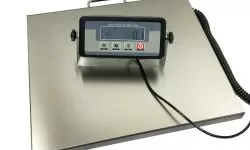
DIGITAL SCALES: Industrial, Commercial and For People
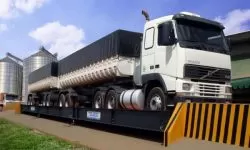
💚 TRUCK SCALE: Definition, Price and Types
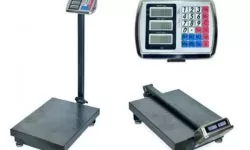
INDUSTRIAL SCALE: Brands, Types and Price

BALANCE or ELECTRONIC HANGE SCALE

LABORATORY BALANCE: Definition, Use and Parts
About Industry and Commerce in ALPHAPEDIA

INDUSTRIAL SCALE: Brands, Types and Price

HEATING PAD: Brands, Types and Prices

💚 TRUCK SCALE: Definition, Price and Types

💚 WALL LAMPS MODERN: Great Price on Qualified Products

💚 WALL LAMPS FOR BEDROOM: Great Price on Qualified Products

💚 WALL LAMPS OUTDOOR: Great Price on Qualified Products
Other Products of Interest in ALPHAPEDIA

SURGICAL SCALPEL

MILLING MACHINE: Types, Brands and Prices

CRUCIBLE MEANING

LABORATORY SHAKER: Use, Types and Price

MAKITA BELT SANDER: Great Price on Qualified Products

WOOD VARNISH: Colors, Price, In Spray
PLATFORM SCALE IMAGE
